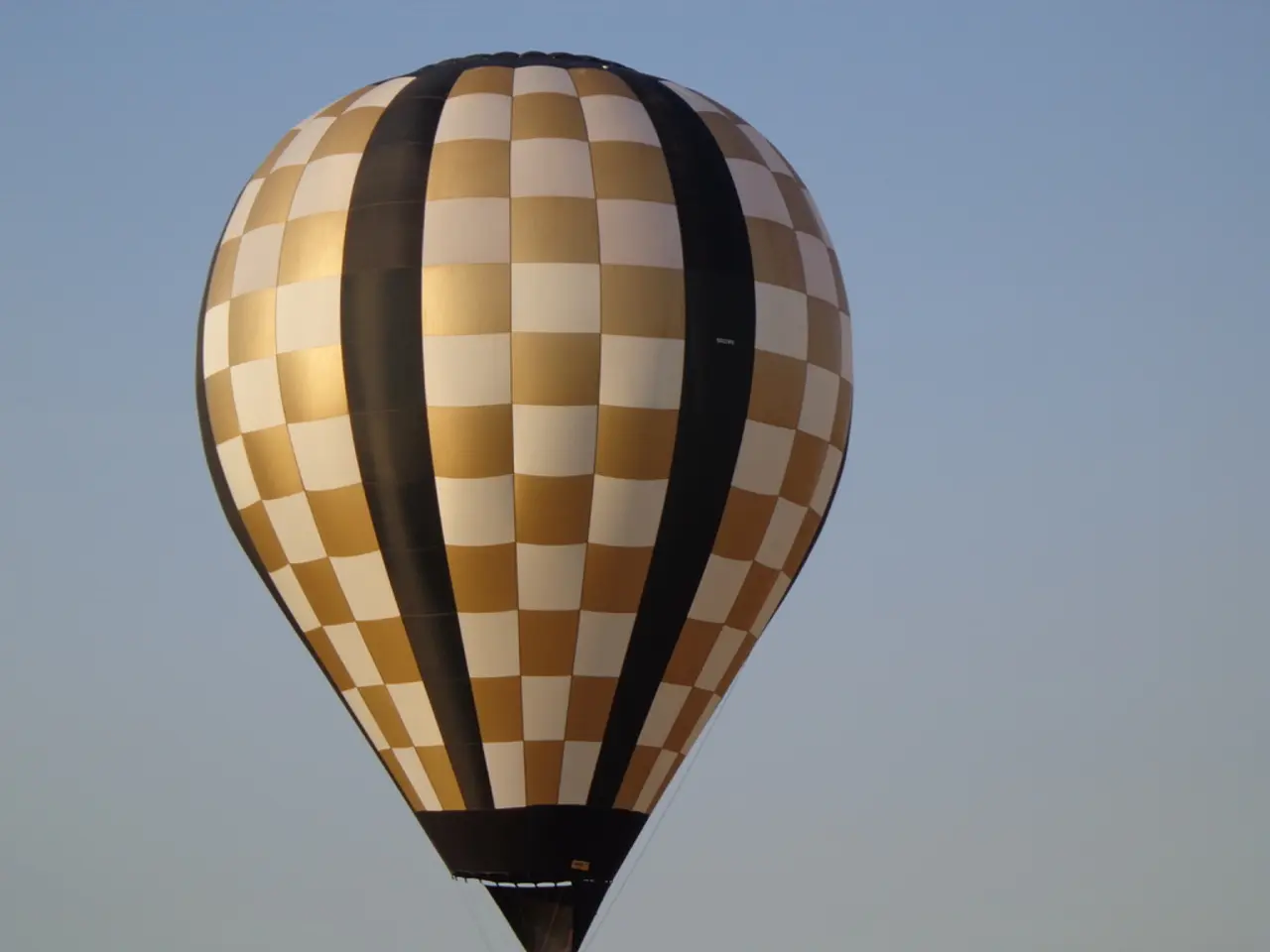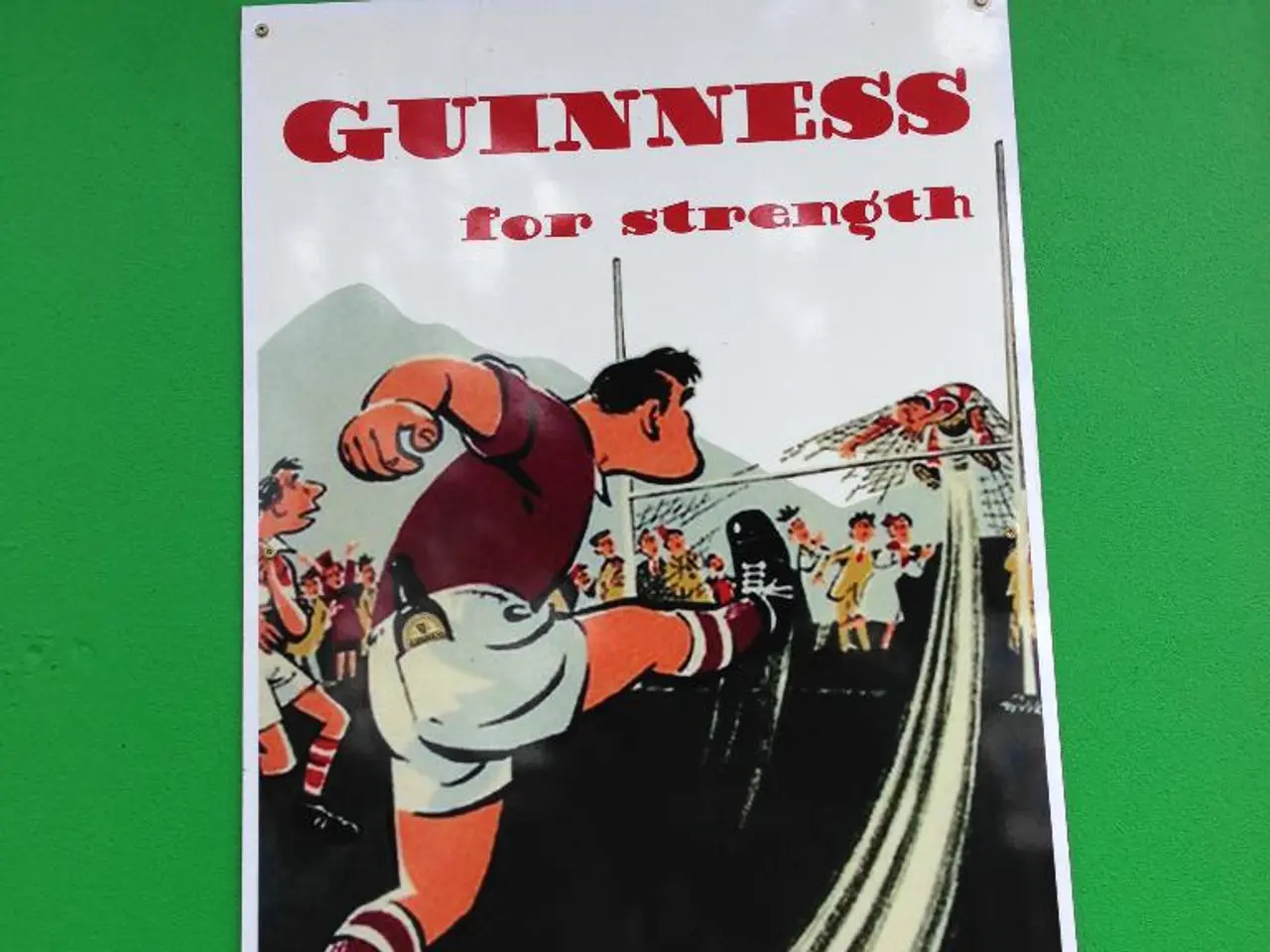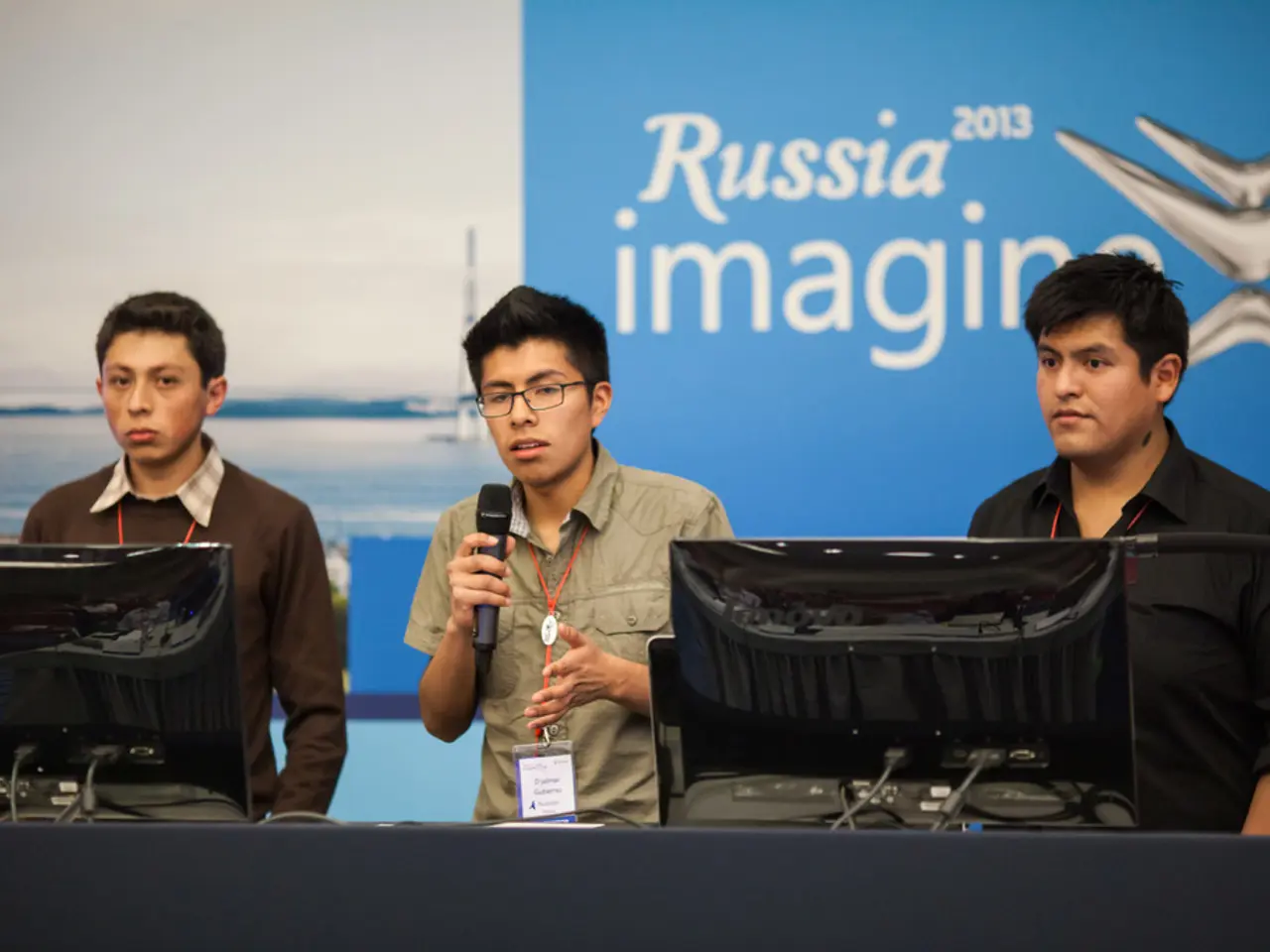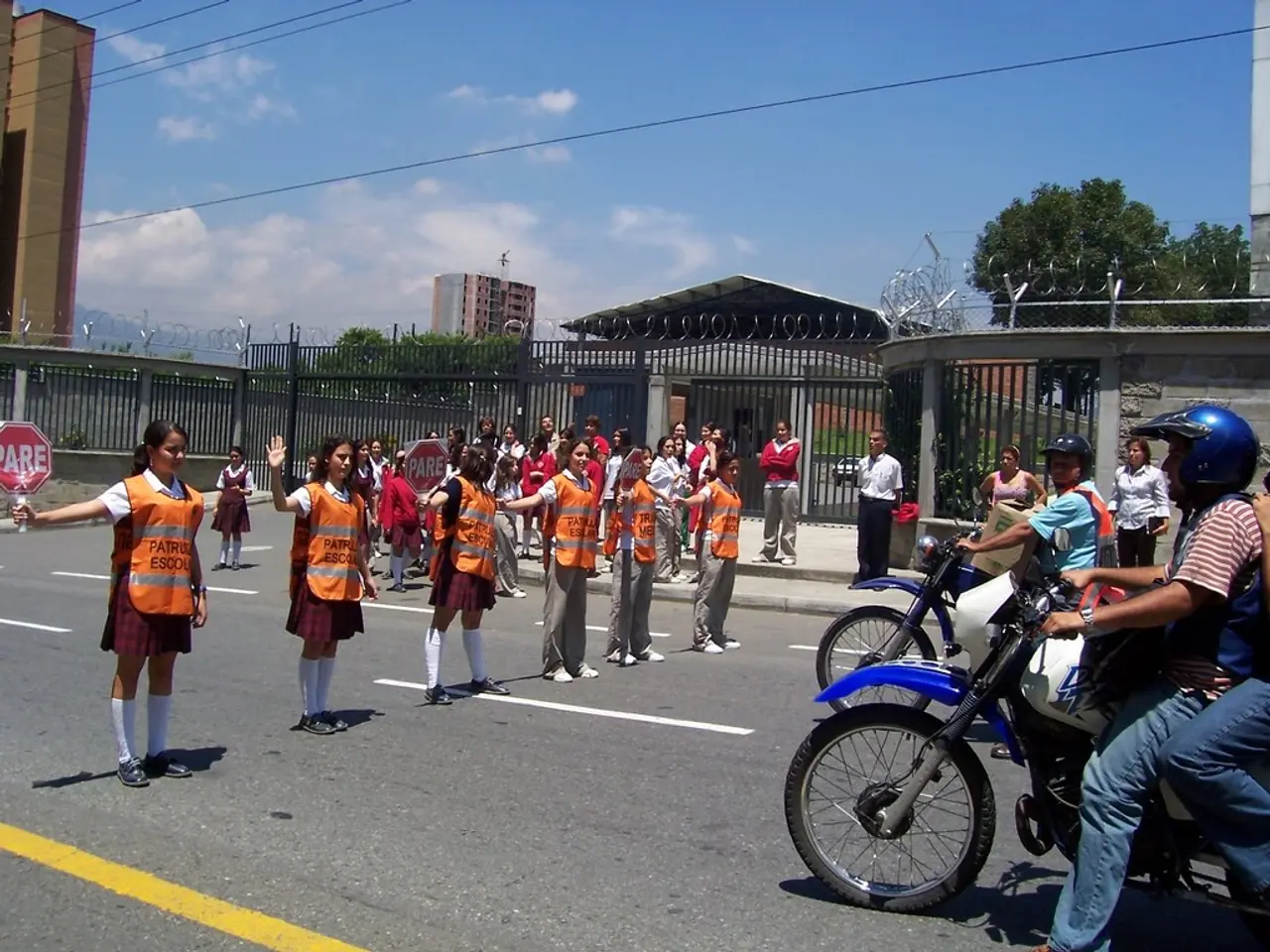Exploration of Balloon and Jar Atmospheric Pressure Dynamics
In a fascinating and educational demonstration of air pressure, the Balloon and Jar Air Pressure Experiment captivates young minds by showcasing how differences in air pressure inside and outside a jar can cause a balloon to be pulled into the jar.
The experiment requires a latex balloon, a glass bottle or jar, a source of ignition such as matches or a lighter, water, scissors, paper cut into long strips, and an optional funnel.
The process begins with a small flame inside the jar, which heats the air, causing it to expand. Some of this heated air escapes, and the flame consumes oxygen. As the flame goes out, the air inside the jar cools down and contracts, leaving less air (and less oxygen) inside due to the oxygen being used up.
Meanwhile, the atmospheric pressure outside the jar remains higher. This higher external air pressure pushes on the balloon, which acts like a one-way valve—it allows the balloon to be pushed inward, but air cannot easily flow back into the jar. As a result, the balloon is pulled partway into the jar due to the difference in air pressure.
This experiment effectively demonstrates how atmospheric pressure can exert force and how changes in temperature and oxygen inside an enclosed space affect air pressure, illustrating fundamental principles of air pressure and gas behavior.
A strip of paper is lit and placed inside the jar to create heat, causing the balloon to be pulled further into the jar. For safety, adult supervision is required throughout the experiment.
The balloon gets sucked partway into the jar due to the higher atmospheric pressure outside. This difference in air pressure makes the balloon get sucked into the jar, providing a hands-on demonstration of the concept.
Air pressure is the force that air exerts on everything around us. The Balloon and Jar Air Pressure Experiment can be extended by using different jar sizes, varying the amount of water in the balloon, or testing with different amounts of air in the balloon to further explore the principles of air pressure and gas behavior.
Related science experiments to explore include the Balloon Rocket, Rising Water Experiment, Hot and Cold Air Balloon Experiment, Tea Bag Rocket (Thermal Expansion), Egg in a Bottle Experiment, Building a Barometer, Can Crusher Experiment, Bottle Rocket, and Potato Straw Experiment.
Helpful science resources include Printable Science Project Packs, Best Science Practices, Science Vocabulary, All About Scientists, Free Science Worksheets, DIY Science Kits, Science Tools for Kids, Scientific Method for Kids, Citizen Science Guide, and Club membership.
With its engaging and interactive nature, the Balloon and Jar Air Pressure Experiment is an excellent way to introduce young learners to the fascinating world of science and the principles that govern it.
- The Balloon and Jar Air Pressure Experiment incorporates activities that are both fun and educational, demonstrating air pressure concepts.
- The experiment showcases how heating a balloon inside a jar causes it to be pulled inward due to differences in air pressure.
- Children can learn about engineering principles as they conduct science experiments like the Balloon and Jar Air Pressure Experiment.
- By observing the science behind air pressure, kids can develop an appreciation for health-and-wellness, fitness-and-exercise, and education-and-self-development.
- For additional learning experiences, related projects such as the Balloon Rocket, Rising Water Experiment, and Egg in a Bottle Experiment are accessible through printable science project packs or DIY science kits.
- With the assistance of adult supervision, kids can safely perform hands-on activities that promote learning and foster an interest in science, art, and other areas.
- By understanding the behavior of gases and air pressure, children can develop essential knowledge about the scientific method and become better problem solvers.
- By participating in experiments that demonstrate principles like air pressure, kids can expand their learning beyond the classroom and make significant strides in their development.




